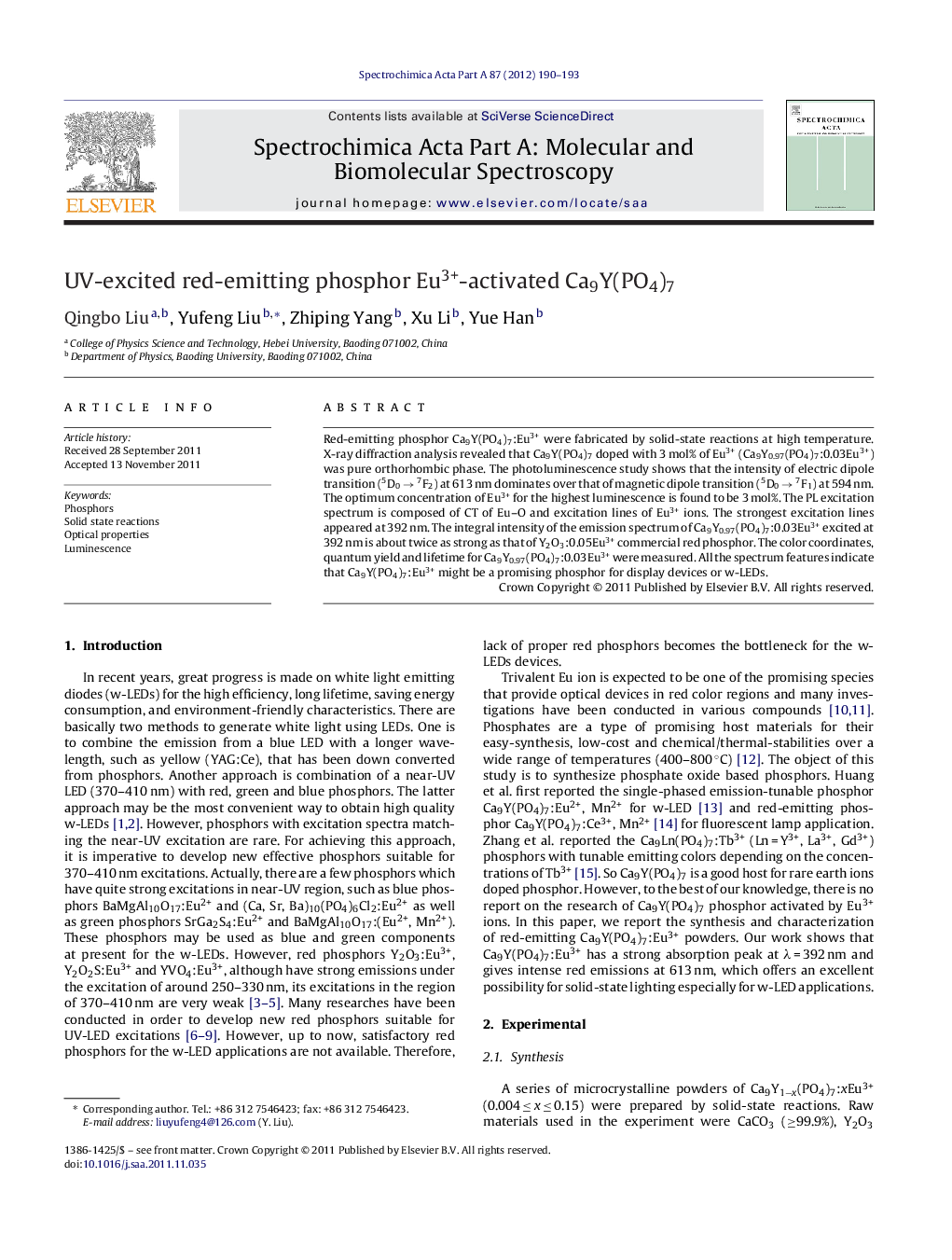| Article ID | Journal | Published Year | Pages | File Type |
|---|---|---|---|---|
| 1235831 | Spectrochimica Acta Part A: Molecular and Biomolecular Spectroscopy | 2012 | 4 Pages |
Red-emitting phosphor Ca9Y(PO4)7:Eu3+ were fabricated by solid-state reactions at high temperature. X-ray diffraction analysis revealed that Ca9Y(PO4)7 doped with 3 mol% of Eu3+ (Ca9Y0.97(PO4)7:0.03Eu3+) was pure orthorhombic phase. The photoluminescence study shows that the intensity of electric dipole transition (5D0 → 7F2) at 613 nm dominates over that of magnetic dipole transition (5D0 → 7F1) at 594 nm. The optimum concentration of Eu3+ for the highest luminescence is found to be 3 mol%. The PL excitation spectrum is composed of CT of Eu–O and excitation lines of Eu3+ ions. The strongest excitation lines appeared at 392 nm. The integral intensity of the emission spectrum of Ca9Y0.97(PO4)7:0.03Eu3+ excited at 392 nm is about twice as strong as that of Y2O3:0.05Eu3+ commercial red phosphor. The color coordinates, quantum yield and lifetime for Ca9Y0.97(PO4)7:0.03Eu3+ were measured. All the spectrum features indicate that Ca9Y(PO4)7:Eu3+ might be a promising phosphor for display devices or w-LEDs.
Graphical abstractFigure optionsDownload full-size imageDownload as PowerPoint slideHighlights► Different concentration Eu3+-doped Ca9Y(PO4)7:Eu3+ phosphor were fabricated by solid state method. ► Its structure, luminescent properties are well studied and characterized. ► We find that the Ca9Y(PO4)7:Eu3+ shows bright red emissions under UV excitation.
